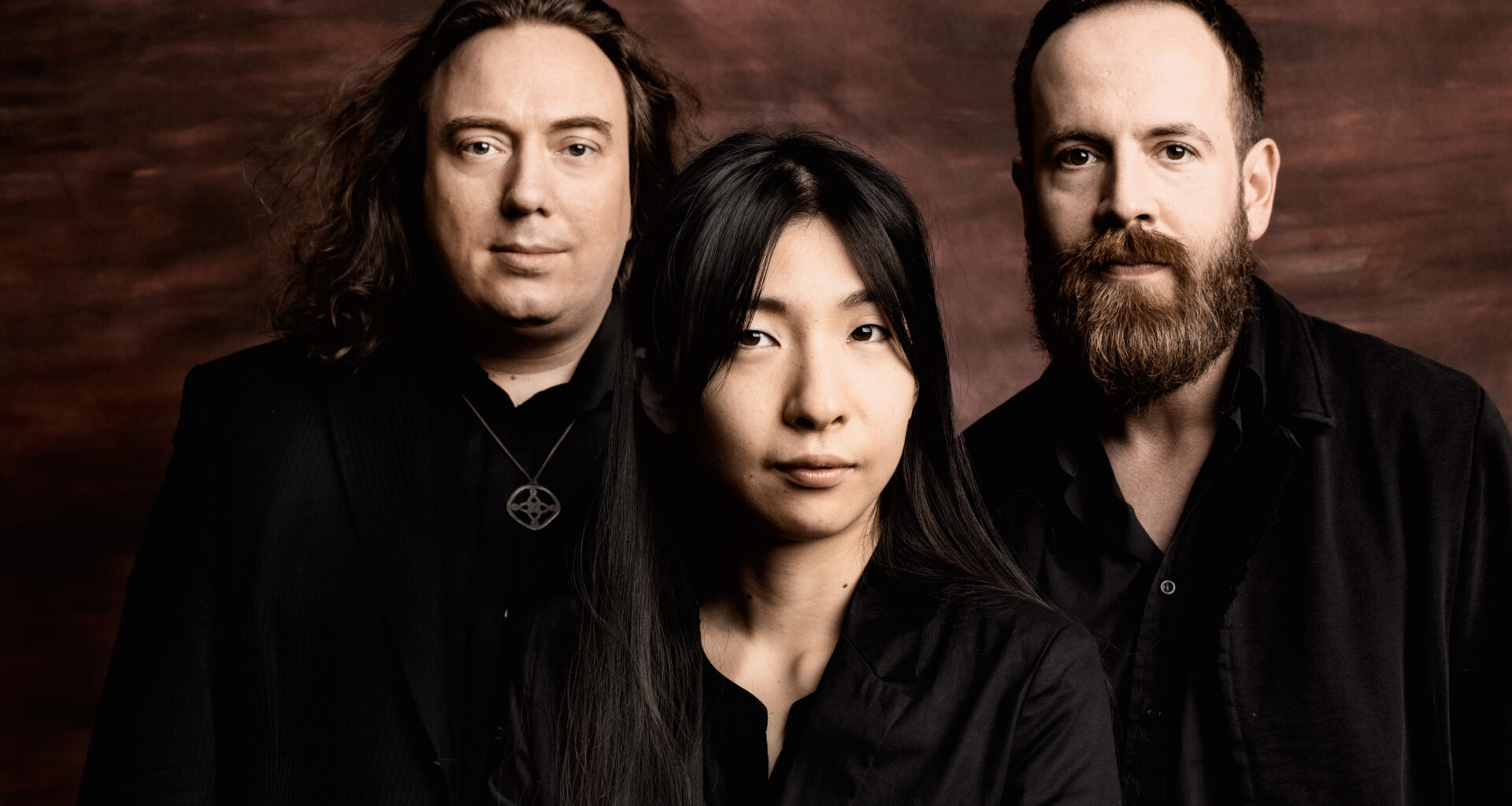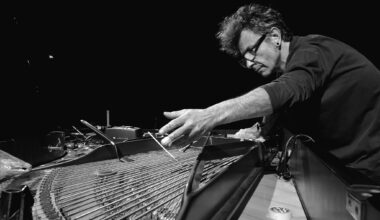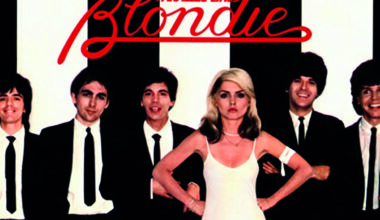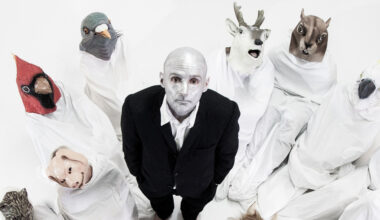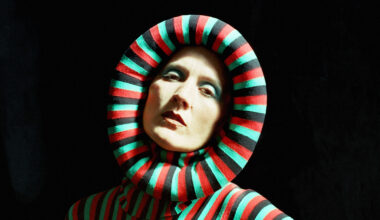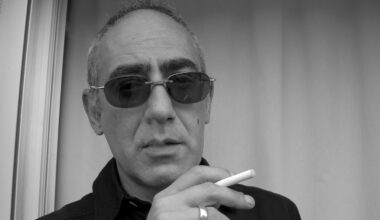When Edgar Froese died in January 2015, he didn’t just leave behind one almighty legacy. He also put in place the means for Tangerine Dream to carry on after his sudden “change of cosmic address”. Let Ulrich Schnauss, who Froese brought into the band in 2014, explain all
There’s something that Ulrich Schnauss wants to share with me before we begin our chat about his role as one third of the ongoing Tangerine Dream project. It’s something the band’s founder, the late Edgar Froese, once told him, and he clearly feels that it will help to set the context in which the rest of our conversation should be viewed.
“Edgar always said he wasn’t interested in technology,” says Schnauss. “He was interested in the possibilities that the technology gave us.”
Ulrich Schnauss has nipped out from his home in the rapidly gentrifying east London suburb of Leytonstone to share a cuppa with me amid the bright lights and airport lounge furniture of a high street coffee shop.
Schnauss was born in 1977 in Kiel, Germany’s most northern city, a place that sits in what he calls the “cultural wasteland” of the narrow corridor of German land closest to Denmark, but he has lived in the UK for more than 15 years. He’s lucky to have moved to Leytonstone when he did, he tells me, because he wouldn’t be able to afford it now. He also finds himself in an unusual position musically, namely that of being spokesperson for a legendary band that started life before he was even born. The first time he became aware of Tangerine Dream will probably be familiar to others from the rave generation.
“I was actually introduced to them by two young guys from Leeds,” he laughs. He’s referring to the start of LFO’s 1991 debut album, ‘Frequencies’, the first track of which namechecks the bleep techno stars’ heroes and inspirations, with Tangerine Dream appearing in a list between Brian Eno and Kraftwerk as one of “the pioneers of the hypnotic groove”. Although rave and electronica has often been presented as some sort of Year Zero, culturally anyway, Schnauss was always fascinated by its roots and predecessors.
“I investigated everything on that LFO list and I discovered a lot of great music because of it,” he says, “Not only Tangerine Dream, but also people like Yellow Magic Orchestra.”
Ulrich Schnauss was raised on the raw, early sounds of dance music, as well as psychedelic indie outfits like Cocteau Twins, who he heard by tuning in to the British Forces Broadcasting Service, a radio station specifically for British troops stationed overseas. But there was also his dad’s record collection, foremost of which was a stack of progressive rock albums that instantly struck a chord with the young Schnauss.
But it was only in 1996, having moved to Berlin in search of a richer cultural and musical life, that Schnauss began to properly soak up the ambitious and highly experimental electronics of Tangerine Dream’s epic mid-1970s quartet of ‘Phaedra’, ‘Rubycon’, ‘Ricochet’ and ‘Stratosfear’. He still remembers discovering the Virgin reissues of these albums in a cut-price record store in the city.
In terms of his own music production, drum ’n’ bass was a natural place to gravitate, especially given that the genre was enjoying its glory days in 1996 and 1997, when the intricate sonics of Photek and Source Direct were coming to the fore.
“I think people had to be really on top of technology back then,” he says, referring to Froese’s declaration about the possibilities of technology. “They had to push it to the limit to be creative.”
Within a few years, once the software and know-how was more widely available, the appeal of drum ‘n’ bass quickly began to wear off.
“Every genre eventually runs out of steam,” concedes Schnauss. “Usually at the point at which it becomes easy for a lot of people to make it.”
He admits to being nervous about deserting the genre around the turn of the millennium, turning instead to electronica, but it seems it was exactly the right thing to do. His first electronica album, ‘Far Away Trains Passing By’ in 2001, proved to be not only a breath of fresh air for his creative process, but also a commercial success, ultimately enabling him to make music for a living rather than a hobby. Having befriended Edgar Frose’s son Jerome through the Berlin music scene, it was inevitable that Schnauss would run into the Tangerine Dream lynchpin himself eventually. So when was the first time they crossed paths?
“It was actually on the telephone,” recalls Schnauss. “I got a call from him because he was organising a birthday dinner for Jerome. I remember thinking [he pauses for effect and gulps audibly], ‘Oh my God, I’m talking to Edgar Froese!’.”
His friendship with Froese Senior grew slowly but steadily from that point.
“In some ways, I think he was a bit of a surrogate father figure to me,” admits Schnauss. “He had a public image of being rather grumpy, but there were other sides to him. He had a brilliant, sarcastic sense of humour, especially when he was discussing music he didn’t like.”
The very public falling out between Edgar and Jerome, who had been co-opted into Tangerine Dream’s ever-shifting line-up in 1990 and remained until 2006, was a difficult time for Ulrich Schnauss. The arguments between Jerome and Edgar’s widow Bianca, who is still TD’s manager to this day, descended into a legal dispute, and the whole ordeal was made more complicated as Schnauss stayed in contact with both parties throughout.
“There was bad blood between Edgar and Jerome for a long time, but that’s not really breaking news,” says Schnauss. “There were some very harsh confrontations, including court cases, so it was quite difficult for a while. It was always a bit weird too. Whenever I met Edgar, he would ask me what Jerome was doing. And whenever I met Jerome, he would ask me what Edgar was doing.”
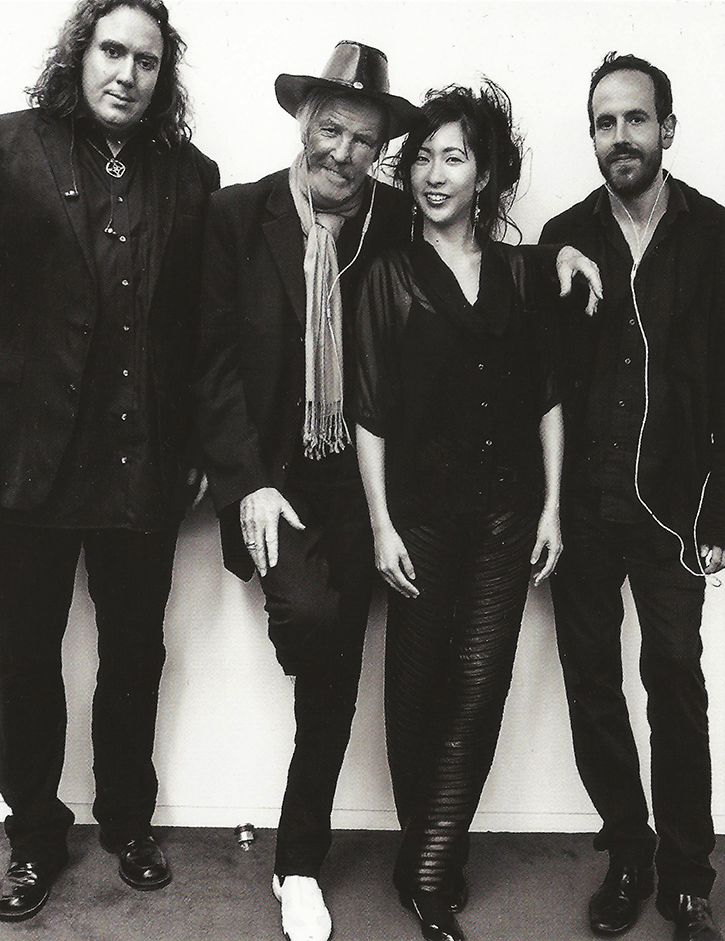
The situation became increasingly awkward when, on a visit to Edgar and Bianca’s house in 2014, Schnauss was invited to join Tangerine Dream.
“They were living near Vienna at the time,” he recalls. “I was at the house and Edgar sat me down at the piano and just said, ‘Play’. He wanted me to improvise on the spot. I think he wanted to see how I coped under pressure like that. I remember Bianca wandering around saying, ‘Oh, that’s nice’. Edgar didn’t say anything, but a bit later he asked me to play again. He told me later on that he liked to get people to play twice when they were auditioning. If they only played once and it’s good, then it can be a fluke, but not if they played well twice. After the second time, I had a feeling something was up. He was smiling and he simply said, ‘Welcome to the gang’.”
Although Schnauss’ decision to join Tangerine Dream certainly affected his relationship with Jerome – “He was obviously not too happy about it,” he admits – time is a great healer and the two are reconciled now.
“We had coffee a while ago in Berlin and I didn’t get the impression that Jerome was still bitter about the situation,” he explains.
Schnauss’ first live appearance with Tangerine Dream was in Melbourne, Australia, as part of a five-date tour. The shows were captured for the group’s 2014 live album, ‘Supernormal – The Australian Concerts’. It must have been nerve-wracking for him to suddenly be on stage as part of such a legendary band.
“I don’t tend to get nervous at gigs, because you’re playing in front of an audience of people who you don’t know,” he says. “I’m much more nervous about the opinions of people I know.”
As such, Schnauss was a bit more twitchy the first time he encountered the studio recordings that Edgar Froese wanted him to work on for the group’s ‘Mala Kuma’ EP, which was released not long after his induction. Froese sent the recordings to Schnauss in London and he awaited the arrival of the package with some trepidation.
“The way that Edgar worked was to fill up all the audio tracks he could, so you’d have these sequences running on every track,” he says. “Then you’d get this hard drive through the post and you’d have to work on creating the music from that.”
Luckily, Froese seemed delighted with the results. As it turned out, Schnauss’ addition to the fold marked another new era in the TD sound, with both the fans and the critics sensing a “back to basics” approach to the raw synthesiser atmospherics that made the band’s name in the first place.
“I think Edgar wanted to clear out and get rid of all the crap, all the bongos and the saxophones,” says Schnauss. “Which I think was absolutely the right thing to do.”
So was this process Edgar Froese beginning to plan a future for Tangerine Dream to continue even when he wasn’t around to guide them? Come to that, was the recruitment of Schnauss part of this planning too?
Schnauss dismisses this idea, which is all too easy to construct with the hindsight that Edgar Froese would die of a pulmonary embolism in January 2015.
“Edgar was always making plans,” says Schnauss. “But I’m not convinced that he had any idea it was going to happen until very near the end. I’m talking about three or four days before he died.”
In particular, Schnauss is referring to the appointment of Thorsten Quaeschning, a TD member since 2006, as Froese’s chosen successor to be the guiding light of the group. It was, in fact, one of Froese’s final acts before he was to “change cosmic address”, as he liked to describe the somewhat blunt notion of death.
It’s also clear that Froese had unfinished business at the time of his cosmic relocation, most specifically a lengthy project based on the theory of quantum physics. This has now spawned two albums, ‘Quantum Key’ and ‘Quantum Gate’, the latter released late last year.
There’s no doubt in Schnauss’ mind that Froese wanted the trio of Quaeschning, Schnauss and Hoshiko Yamane, the group’s electric violin player since 2011, to continue this unfinished work in Froese’s memory.
Which is how Schnauss sees Tangerine Dream circa 2018 – a vehicle for completing and drawing a line under Edgar Froese’s legacy, rather than a bandwagon that rolls on long into the future. Central to this idea is the music that Froese left behind on hard discs jammed full of multi-track audio, of which several remain untouched. Interestingly, there’s no question of the three of them working on fresh new material under their own steam – that simply wouldn’t feel right.
“I think the only thing I would want to commit to is trying to do more with Edgar’s unfinished pieces,” explains Schnauss. “I really love that because you get a great insight into how Edgar was working.”
So although the Tangerine Dream story is not about to finish just yet, the project has a finite shelf life. And while there’s still more material to be explored, there are also still live shows to play. Shortly before my chat with Schnauss, Tangerine Dream had played the swanky Elbphilharmonie hall in Hamburg. Was it fun?
“Yeah,” says Schnauss, not sounding if he believes it himself. “To be honest with you, I like different settings for concerts, but that was a very posh setting.”
Wonderful acoustics, in other words, but in his opinion the atmosphere was a bit stuffy. We can only hope that when Tangerine Dream visit the UK for a couple of very rare shows this spring, bookended by two further German gigs, he finds the picturesque Union Chapel in Islington, north London, a bit more to his liking.
Regardless, you’d be well advised to catch them if you can. You’re probably not going to get too many more chances.
“Because of the way that Edgar worked, it’s not like there are loads of unreleased tracks lying around,” says Schnauss in conclusion. “You know, you can’t put out a sequence that just repeats for an hour!”
The ‘Quantum Gate’ album is out on Kscope, while Edgar Froese’s autobiography, ‘Tangerine Dream – Force Majeure’, is published by Eastgate Music & Arts.
